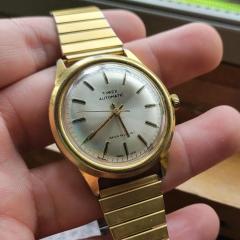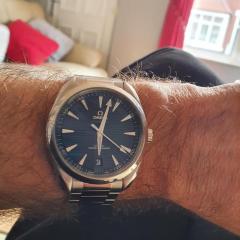Omega 640. It's so small and the case screws are fused and broken...
-
Recently Browsing
- No registered users viewing this page.
-
Topics
-
Posts
-
By Neverenoughwatches · Posted
Yep, so we got a 10 1/2 ligne movement, thats the starting point now these bad boys books should hopefully get us across the finishing line . Next we need a good clear picture of that rocking bar, the setting lever and the setting lever spring. I've already got an idea what it might be. -
Kalle Slaap said he is visiting London this week in order to see the exhibition. I was keeping an eye open, hoping to meet him.
-
Thank you for your introduction and welcome to this friendly forum. We all look forward to your contributions and continued involvement.
-









Recommended Posts
Join the conversation
You can post now and register later. If you have an account, sign in now to post with your account.
Note: Your post will require moderator approval before it will be visible.